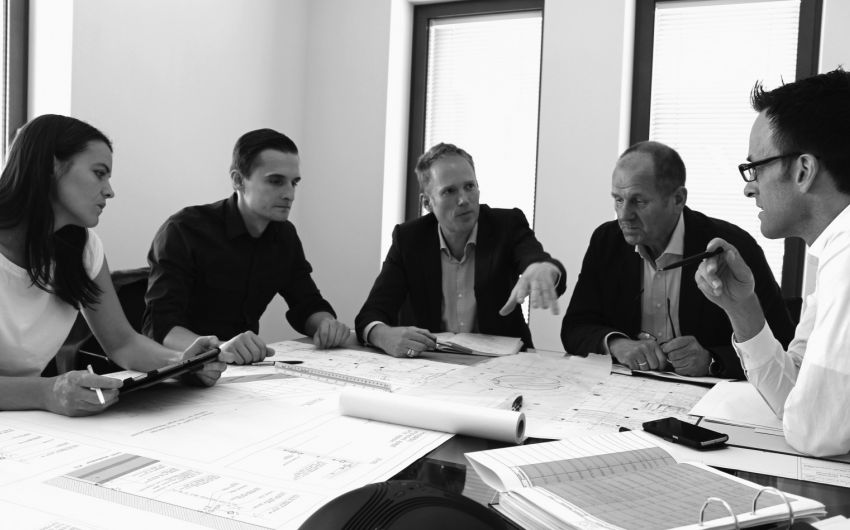
People profile: Düsseldorf Director Ruprecht Melder talks about Chapman Taylor and how design is changing
Tell us about your background
I was born in Munich and grew up in southern Germany, very close to the Alps. My mother was a designer, my father in the building business and my grandfather manufactured tubular steel furniture. This early exposure to both the building industry and design was probably the reason why I gravitated towards being an architect!
What finally triggered my decision to study architecture was a trip to Japan after high school. A friend of mine did his thesis in architecture on traditional tea houses in Japan. He invited us to come to Japan to stay in a Japanese temple and to see traditional and modern Japanese architecture. Overwhelmed by this experience, it was clear to me that I should become an architect. I went on to study at the Technical University of Munich (TH München), where I did my diploma in 1995.
Why did you join Chapman Taylor?
A good friend and colleague of mine moved to London to work with Chapman Taylor, and he rang me to let me know that they were looking for more German architects in order to set up a German team in London because they wanted to expand into the German market.
My friend told me that (former Director) Jens Siegfried and (former Main Board Director) Geoffrey Moir would be visiting Munich, and recommended that I should drop in on them at their hotel for a job interview. By the time we had reached our third pretzel and second cup of coffee, I had a job! I started in London the following Monday.
I started to work on German projects from London, and, two and a half years later, I moved to Chapman Taylor’s newly established Düsseldorf studio. Chapman Taylor has since become a leading name in German commercial architecture, with a deep knowledge and experience of the German and Austrian markets and beyond, with business continuing to grow throughout the region.
What key changes have you seen since you became an architect?
There have been many changes in the past 23 years, though, ultimately, the end goal remains precisely the same – to produce the best design possible. The manner of achieving that has changed, due to the increased technical complexity and legal requirements involved, about which I have written an Insight paper.
In Germany, architects are increasingly taking on the role of Generalplaner, literally “general planner”, also referred to as the “prime consultant”, a function I perform for Chapman Taylor. The trend is to appoint one architect who then acts as the prime consultant who appoints all sub-consultants. The general planner would typically then appoint consultants in disciplines such as architecture, structural engineering, building services engineering, building physics, traffic, fire protection engineering and landscape design. For international investors looking at the German market, the general planner model is very attractive because they only need to engage with a single point of contact, and don't have to deal with different specialist consultant disciplines.
One of the biggest changes has, of course, been digitalisation, which has led to an entirely different design approach and has transformed how designers interact with clients, stakeholders and others. This is an area where Chapman Taylor leads our industry. When I was at university, master’s theses and diplomas were designed by hand, and Computer Aided Design had only just begun to be taught. The internet was still in its infancy at that time, so you can see how profound the changes have been.
You are now Director – tell us about your role.
As Director, my daily work can be very diverse. With Jens Siegfried, I am in charge of the day-to-day running of the Düsseldorf studio, which means bringing in new projects, negotiating reasonable contracts etc.
In addition, I am responsible for planning a number of projects at any given time. I am responsible for the design and delivery of retail, office and hospitality projects, and I bring a wealth of experience and expertise to those roles.
Being a Director is challenging, but can also be great fun, because have very good people in our team. People are the most important resource in any organisation, and that is certainly true for us. My task is to ensure that we have an excellent team and that the team is well motivated.
What are the main challenges you see for design practices in the coming years?
There are always big challenges ahead at any given time, and now is no different. It is certainly a tense period in the German labour market, and so it is important that we ensure that our employees know how valued they are as part of Chapman Taylor and also that they understand our philosophy as an organisation.
Chapman Taylor is in an excellent market position in Germany and the region, regularly working on prominent and prestigious projects for clients who know we can deliver their vision in an attractive yet commercially realistic way. However, we must never be complacent. It is important that we continue to stay ahead of other design practices, not just in terms of our architectural expertise, but also with regard to our knowledge of the very latest technology, such as BIM and Virtual Reality.
As always, it is important that we keep a close eye on the way in which the property market is growing at different rates in different areas and then react intelligently to changing market needs. Clients know that we lead the industry in this regard, and count on us to keep them informed of market developments and to give them the best advice.